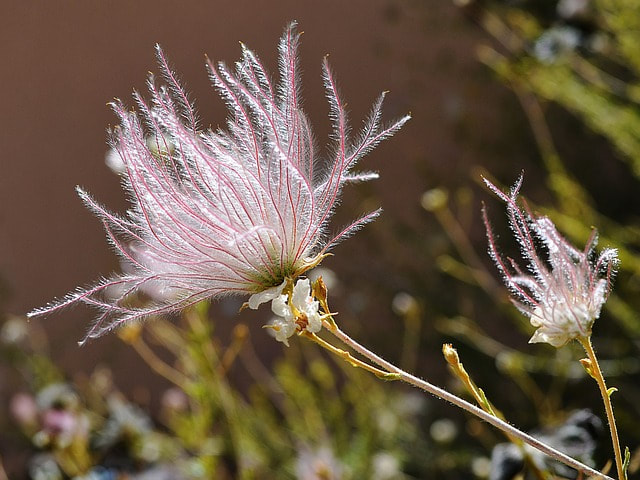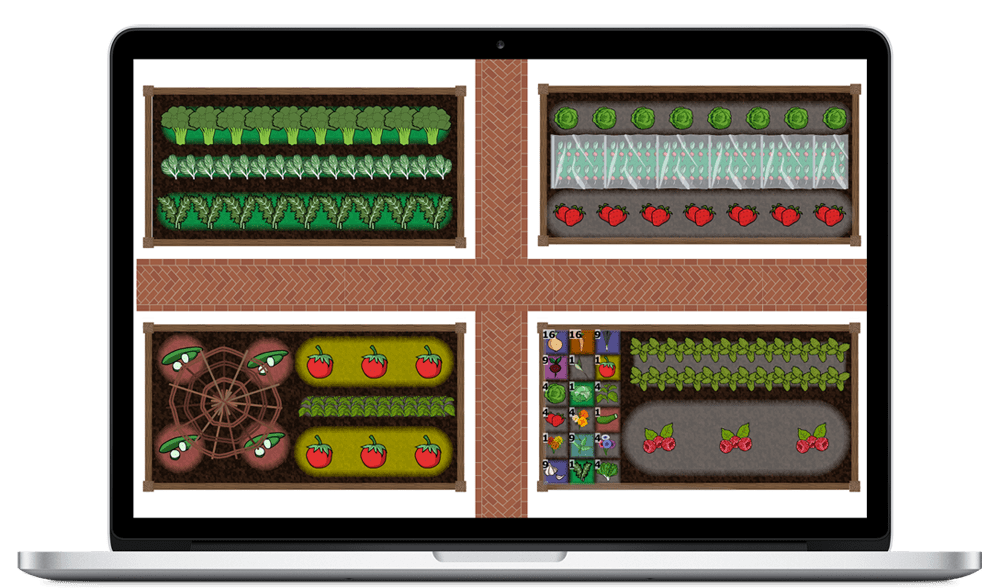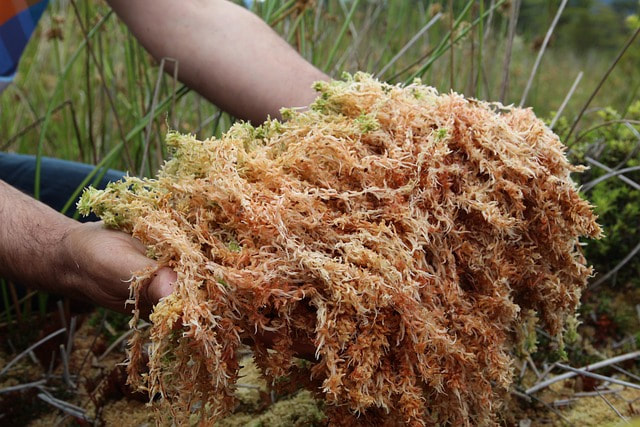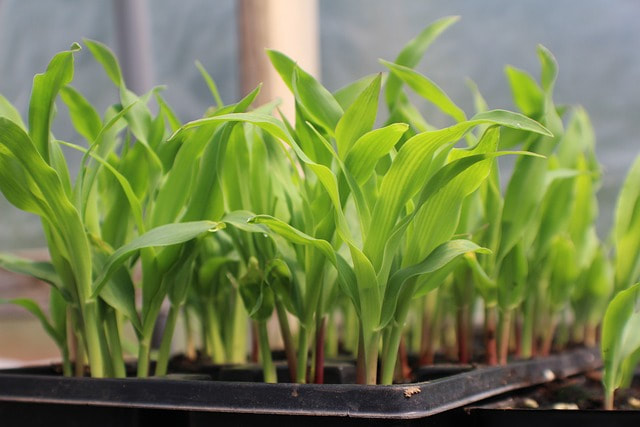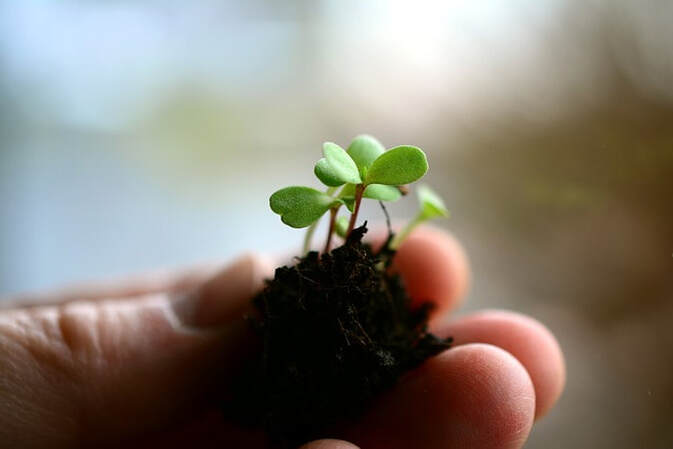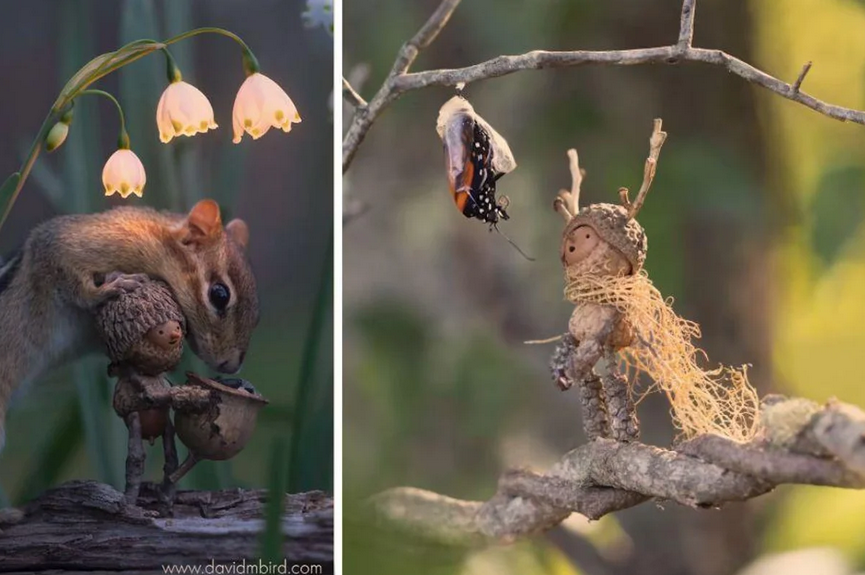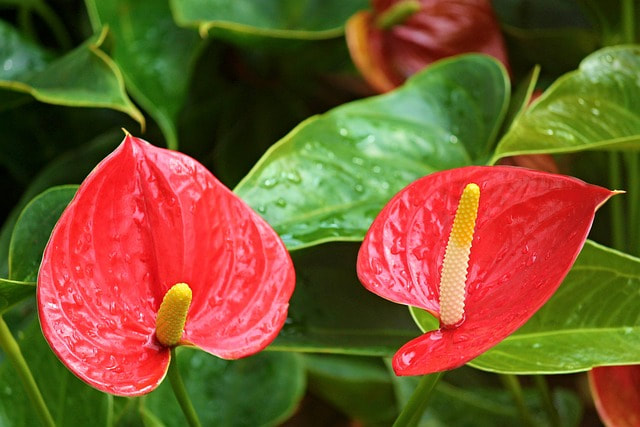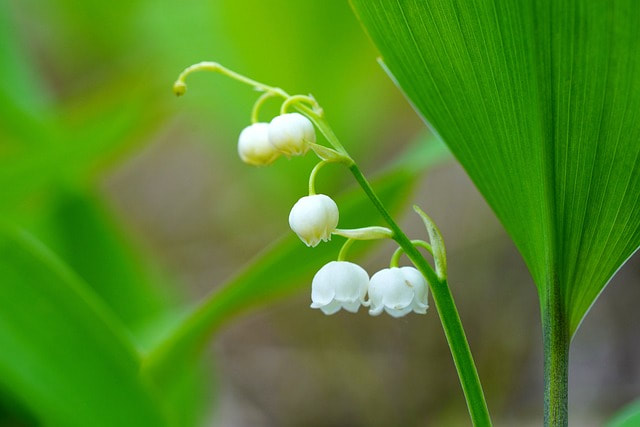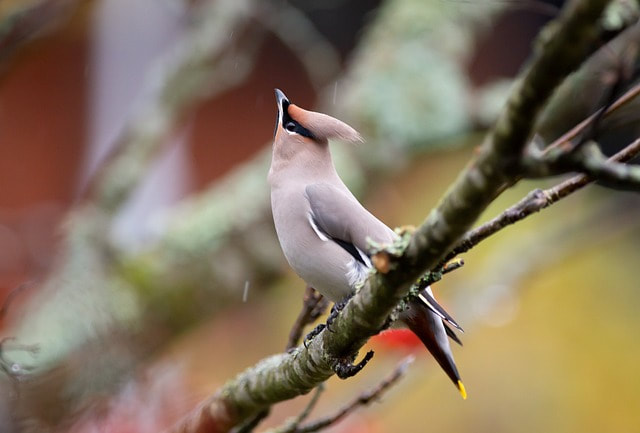Native plants are powerful tools for environmental change and urban transformation, and they’re vital to supporting natural ecosystems and critical to regenerating land and climate. Introducing them to public spaces and our own backyards preserves ecological well-being and ensures a more resilient future. - Lily Kwong, landscape designer (Freedom Gardens)
Garden planning software can be a valuable tool for anyone looking to design and create a beautiful outdoor space. By using planning software, gardeners and can create detailed plans and visualizations that bring their ideas to life. Garden planning software is a computer program designed to help gardeners and landscape designers plan and create gardens. These software programs help users create designs, select plants and features, estimate costs, and produce detailed plans and blueprints for their gardens.
There are a variety of garden planning software programs available on the market, with different features and price points. Popular options include: Garden Planner Online: Garden Planner is an easy to use garden and landscaping design tool. Arrange plants, trees, buildings and objects using an easy to use 'drag and drop' interface. Use tools to quickly create paving, paths and fences, or use the vegetable bed tool to easily layout vegetable and herb gardens. The Old Farmer's Almanac Garden Planner: Whether you want to create a square-foot garden for vegetables, a kitchen garden for herbs, or a beautiful flower garden, this software will help you find the best layout for your space. Easy to use! Smart Gardener: An online vegetable garden planner for anyone who wants homegrown, healthy and tasty food to be part of their (busy) lifestyle. Gro Veg Garden Planner: has many plants you won't find with other garden planning software. You can even have it send you emails to remind you when to plant your crops. Garden Puzzle: Filter plants suitable for your needs, based on climate zone, soil and lighting conditions. Easily browse the database for plants with specific size or features. Search by common or botanical names. More sophisticated than most of the above, this planner really shines for landscape planning but works beautifully for vegetable gardening also. Online Kitchen Garden Planner: This software is designed specifically for garden planning and includes features like pre-planned gardens to get a quick start. Choose from 26 options, including many designed just for elevated raised beds. To create your own garden, click Plan Your Own Garden. Just drag and drop crops to the planting grid and the planner fills in the number of plants with appropriate spacing included. Photo credit: Old Farmer's Alamanc 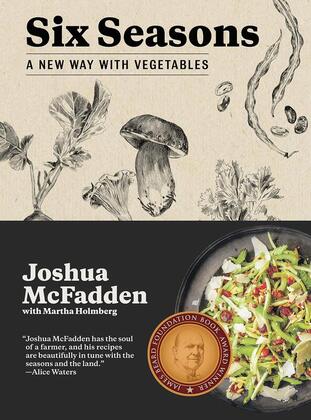 Six Seasons: A New Way with Vegetables is a cookbook written by Joshua McFadden, a renowned chef and farmer, and Martha Holmberg. The book explores the concept of six seasons of the year, each defined by the unique vegetables and produce available during that time. The six seasons Spring: This season features early greens, asparagus, and spring onions, and highlights dishes like pea shoots with goat cheese and garlic soup. Early Summer: The early summer season brings strawberries, cherries, and sugar snap peas, inspiring recipes like grilled apricots with burrata and roasted cherry tomatoes. Midsummer: The midsummer season showcases summer squash, cucumbers, and tomatoes, with recipes like grilled eggplant with feta and tomato-watermelon salad. Late Summer: Late summer features sweet corn, green beans, and tomatoes at their peak, and recipes like roasted green beans with hazelnuts and corn fritters. Fall: In the fall season, the focus is on hearty vegetables like squash, pumpkins, and root vegetables, with recipes like roasted butternut squash with brown butter and pumpkin soup. Winter: Finally, the winter season is all about dark greens, root vegetables, and citrus fruits, with recipes like braised fennel with orange and roasted beet salad. This book encourages readers to embrace the changing seasons and to discover new ways of enjoying the natural bounty of each one. It is a James Beard Book Award winner. The book features over 200 recipes that highlight the unique flavors and textures of each season's produce, and also includes practical tips for selecting and preparing vegetables, as well as storing them for optimal freshness. Black Forest Garden Club February meeting was a huge hit (almost two dozen in attendance)!
We enjoyed wine and tastings of local, homemade toffees, caramels, and chocolates. The resources for all of the makers and products we sampled are below (this information will live on our Resources page also). Chevre cheeses - maker Jim and Carole Bennett. Email Jim to purchase Salted Vanilla Bean Caramels: maker Faith Wright. Email Faith to purchase. Toffee: maker Sharron Allen. Email Sharron to purchase. (Sharron also is a chocolatier). Bavarian Creams: maker Kilwins. Parker retail store info here. Ancho Chili Sipping Chocolate: maker Tony's Market. Dark Drinking Chocolate Sticks: maker Trader Joes. Purchase here. There has been a lot of chatter recently about peat moss. The stalwart garden staple most grow up learning to rely on for added soil improvement. But is it good for the garden? Many experts say to skip it, and the reasons why might surprise you. In it's February 2, 2023 article about peat moss, Architectural Digest says "Sphagnum moss is fresh and less processed, whereas peat is from Sphagnum moss that has been digested in peat bogs for thousands of years." "Technically speaking, because peat takes so long to replace, even though it’s a natural process, it is considered a non-renewable resource.” Peat moss is used for plants both indoors and outdoors. It is spongy and holds enough water without being sopping wet, and is derived from digested Sphagnum moss. Peat moss harvesting releases twice as much CO2 into the atmosphere every year as the entire airline industry. Because of the environmental damage that can come from harvesting peat, it’s been banned in Europe.
For most plant owners, peat moss is not something that is native to where they live. Not only does the peat moss have to be harvested, but it is also transported across the globe, creating even more carbon in the environment. Here's the full article, including ideas on what to use instead of peat moss. Image show peat moss being harvested. Article credit: Architectural Digest Mark your calendar for our Garden Club March 16 event The timing of this Club event is perfect for our area because best planting times for indoor seeds begins in mid-to-late March and also April and May depending on what you are seeding. Best planting dates linked below. Club past-president Dennis Volz will demonstrate best practices for seed starting - including tips and tricks for growing good healthy plants with good strong roots before planting into your garden in spring. We'll also have a seed swap - bring your extra seeds (expiration dates of 2021-2022-2023 only). Loose seeds/repackaged seeds - please test for viability before packaging and labeling. Here's how to check seed viability. For a Farmer's Almanac Chart on the best time to start seedlings of vegetables and herbs for our area, click here.  THIS ARTICLE HAS BEEN UPDATED: the method of placing seeds in water to see if they sink or stay on the surface is not a good indicator of seed viability. We tested this and did not get good results, yet the same seeds did sprout using the germination test (see below). Here are some methods to test the viability of seeds:
The viability of seeds depends on many factors, such as the type of seed, its age, and the conditions in which it has been stored. Keep in mind that not all seeds will germinate even if they are viable. Factors such as temperature, humidity, and soil conditions can also affect the germination rate. "No matter how old we get, there's a part of us that revels in the magical wonder of childhood. One toy designer-turned-acorn artist has tapped straight into that wonder with the worlds he creates for his "Becorns" and the creatures who stumble upon them.
Becorns are David Bird's name for the tiny characters he creates out of acorns and sticks. He has made over 100 of them, all with different personalities and names (such as Bing, Cooper, Big Boone and Vildegarde)..." See the full article and meet the Becorns HERE! Credit: Upworthy and David M. Bird (photos and creator of Becorns) Our upcoming meeting is next Thursday, February 16th with a wine, chocolate, and cheese tasting.
We have just learned that our local chocolatier Kilwins is donating pounds (!) of Bavarian Creams for the event. If you haven't been to Kilwins ahead of Valentines day, it is highly recommended. The variety and quality of this local chocolate purveyor's goods is impressive and supremely tasty. And Kilwins' owner Susan is a fellow gardener! We'll be introducing you to our friend (and gardener) Faith W. who is attending the meeting with her luscious homemade salted vanilla bean caramels for tasting. She'll have extras on hand for purchase. Faith also accepts custom orders. The packaging of her caramels is creative and makes a gift of even a few caramels feel like something extra special. Club President Jim Bennett will have a variety of goat cheeses on offer for tasting and order/purchase. Jim's wife Carol is the creative artisan behind the goat cheeses and is always coming up with new flavors (jalapeno is one of their most popular) and will provide us with information on what goes into the making of chevre cheese. Please bring a bottle of wine and $3 to the event. ALL ARE WELCOME and we encourage you to bring a friend or two! Location: 6584 N Yucca Trail, Parker Time: 7pm Keep the blooms coming with a rose plant
Your Valentine can keep it indoors for now and move it outside when the weather warms. With proper care, roses will continue to bloom indoors. Give your sweetheart some special indoor greenery Indoor plants are always a good idea because they help clean the air of toxins, and some of them bloom too. Think about your Valentine’s lifestyle and where they might want to keep a plant. There are plants for people who suffer with sleepless nights, are away from home much of their time, have little to no sunlight in their homes or are forgetful gardeners. Here are some ideas to help you match the plant to your person. Steps for making the perfect plant-partner match: Indoor bloomers for the sweetheart who loves flowers Cyclamen is a popular indoor flowering plant in the winter. It is available in many colors ranging from white, pale pink and hot pink to red. It needs some sunlight and regular watering. It also helps clean the air. Pick one large plant or group several small ones in a basket. Gloxinia will bloom anywhere it receives bright, indirect light. Blooms are large, trumpetlike flowers in a variety of colors. It requires water when the soil feels dry to the touch and fertilizer once per month while flowers are in bloom. Ideas for those who need a durable, growing gift Need it to thrive in a darker environment? The name of Cast Iron Plant aptly indicates its hardy nature. It grows 2-3 ft. tall and has narrow, dark green leaves. It will live in dark rooms with infrequent watering and spreads slowly so it rarely needs re-potting. Need it to survive mostly on its own? Red Aglaonema or Chinese evergreen is a show-stopper with its red-pink-and-green leaves. It tolerates dry soil, making it very suitable for forgetful gardeners. Need it thrive alone for periods of time? ZZ Plant is a great match for frequent travelers because it tolerates dark corners and dry conditions. It won’t need water until the top inch of soil dries. It will also live under fluorescent lights, so it could be a good choice if your sweetheart spends a lot of time on the road or at the office. A gift for the restless sleeper Lavender has a lot going for it. Here’s a perennial that grows well and blooms indoors in a sunny window. It is well-known for its fragrance and as a de-stressor. Just brushing a hand across its fragrant leaves can help your sweetheart relax and even sleep better. 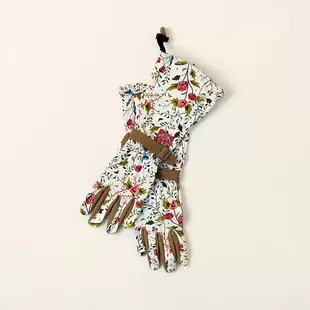 These garden gloves are a step above the ordinary with long cuffs and cinch-tight capability to keep out prickly, thorny, and biting hazards. Made of breathable cotton twill with vegan leather reinforcements. Pretty too! Machine washable. $34 Click here to purchase. Looking for something a little different? Check out this review of garden gloves to find what you're looking for. Photo Credit: Uncommon Goods Why not give a gift that blooms all summer? This Valentine's Day why not give the gardener in your life (even if that's you) some dazzling colors and smells through the gift of flower seeds! Baker Creek Rare Seeds recommends these favorites (with colors like nothing you've seen!) to get you started. Each on the list has a link to the specific flower page where you can see the selection and order.
About Baker Seeds (from their website) We offer America's most diverse selection of heirloom seeds! These varieties have often been saved and passed down by gardeners for generations. Heirloom varieties are packed with flavor, beauty, and fragrance.All the seeds we sell can be saved, shared, and traded, and we encourage people to save their own seeds. Baker Creek (Rare Seeds) Website Baker Creek 2023 Seed Catalogs Deciduous shrubs play an important role in the environment as well as in our landscapes. Some uses beyond their beauty and their interaction with the greater environment include attracting birds and butterflies by offering food and shelter.
All of the shrubs in the following list lose their leaves during winter, but have lovely blooms and beautiful fall color. Additionally, they are non-invasive and do very well in our climate. These are excellent as natural privacy screens and provide cover for small birds.
For information and each including a photo of each, click here. Credit: Better Homes & Gardens Early February - use this time for garden projects you will soon be too busy to attend to later. Build a cold frame or potting bench, clean tools, clean out pots with a stiff bristle brush, or organize seeds and bagged soils so you know what you need for the growing season. Full Snow Moon - February 5 We can complain because rosebushes have thorns or rejoice because thorn bushes have roses. - Abraham Lincoln (February 12 birthday) February 14 - Valentines Day. Grow succulents in a heart-shaped box or select a houseplant, such as an orchid, brommeliad or red anthurium (shown in photo above) for your special valentine. February 22 - George Washington's birthday. A "father plant" is one from which pollen has been obtained to create a hybrid. Sow seeds indoors - sow cool-season vegetable seeds indoors, including‚ broccoli, cabbage, cauliflower, kale, leeks, onion and Swiss chard. Plant six weeks before your last date of expected frost. Your indoor plants may notice the longer days, and begin growing. You can begin feeding them again, but only use a half strength solution of your house plant fertilizer until the growth is robust.  Once you've finished eating the chocolates from the heart-shaped box they came in on Valentines Day, you can recycle the box for use as a pretty container to hold easy-to-grow succulents. Simply wipe out the bottom of the box with a damp cloth, add succulent potting mix or gravel to the bottom one-third to one-half third of the box, and then nestle in your choice of succulents to fill in the space. Gently loosen up the roots of your succulents and remove any dead roots or old dirt stuck to them before planting. You can leave room for an interesting piece of wood or decorative rock if you like. Moisten the soil after planting, and then water only occasionally (misting the succulents is best to keep the box from getting soggy). Succulents can live for one to three months without water, so water sparingly. Place the succulents box in a bright, light spot (succulents love sun and warmth) and enjoy! The roots of trees are adept at out-competing any other growing matter because they take up the water and soil nutrients. You can work around this by choosing plants with shallow roots (hellebores and astilbe among many others).
One of our local nurseries will guide you toward shallow-rooted plants that they have in their inventory, or you can do a quick Google search for "plants that grow under trees" and get lots of ideas. When choosing plants, however, consider the moisture of the soil under the tree(s) you wish to plant beneath. Soil under trees tends to be very dry because we don't really water mature trees and especially the soil around the perimeter of the tree. A search for plants that grow in dry soil under trees is probably a more targeted way of discovering what will work in this very unique growing area. Some examples in this category of plants (shallow roots and alright in dry soil):
For even more plant ideas for dry shady areas, click here. It's so good to see that birds we thought long gone are being spotted here and there in Colorado.
Curious what the rare and beautiful bird being seen all over Denver this year is? Click here! (Also pictured above).  When you plant according to the 'micro-climates' within your unique property, plants live longer, healthier lives. CSU Extension recommends you take a good look at the sun that hits the ground around your property. Look at each area separately to determine if it gets any direct sunlight at any part of the day, especially in spring and summer. Also consider how much moisture or precipitation each area gets.
What if an area gets no sunlight? If an area gets no direct light, that is “deep shade,” as you would find on the north side of a building, or under an evergreen. There are a few plants that will grow in deep shade, and those will do better if they have extra water. With low light and no water, you will often find bare ground. What is “filtered shade”? If light gets to the ground between branches and leaves, that is “filtered shade.” Many full-shade shrubs, like Mahonia – Colorado Grape Holly, and wax flower will do better if they get a bit of this gentle light. What trees are suited for “part shade”? If the area gets some light, that is “part shade.” Trees well suited for part-shade are Gambel oak and junipers. What do I do if my property doesn’t get full sun? Because of our intense sunlight, some plants that prefer full sun can survive in Colorado if they get 3-4 hours of direct sunlight, like viburnums, and burning bushes, but will not bloom well or be as bushy as if they had full sun. If they are given more light and water, the same shrubs will be bushier, taller, and bloom better. Does having native plants matter? In challenging settings, native shrubs and trees will fare better than those from other areas. For example, Gambel oak will grow better in the foothills than boxwood shrubs, tolerating our alkaline soil, desiccating wind and sub-zero temperatures. Do different plants do well in dry versus wet shade? Trees that do well in moist shade are serviceberry and redbud. Shrubs for dry shade areas include buckthorn, privet and Japanese barberry; moist shade shrubs include redtwig dogwood, gray dogwood, viburnums and daphne. For more information, see the following Colorado State University Extension fact sheet(s): Credit: Plant Talk, CSU Extension |
AuthorsBlog posts are written by Kathy Sullivan, Communications Director. Contact BFGC: [email protected] Archives
July 2024
Categories
All
|
